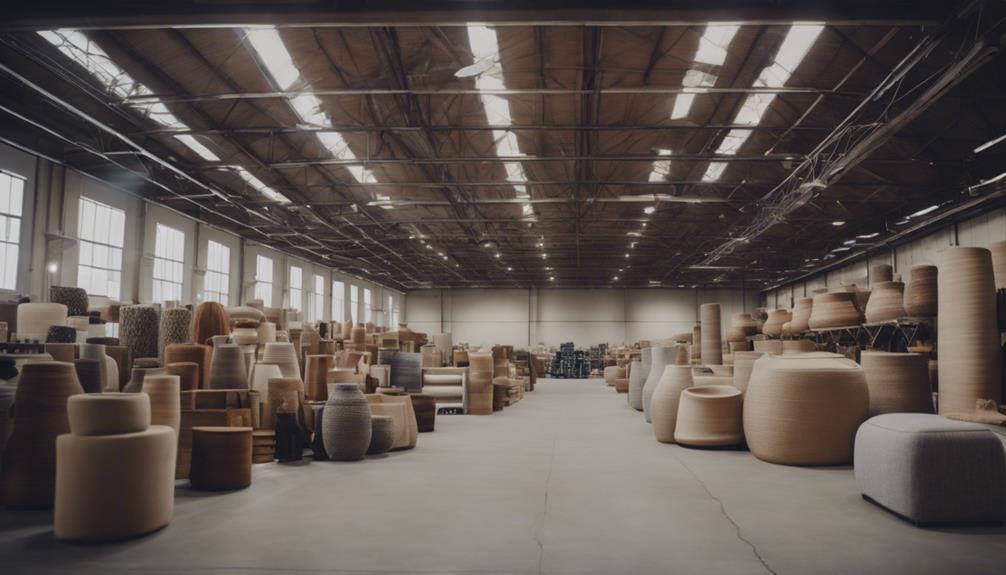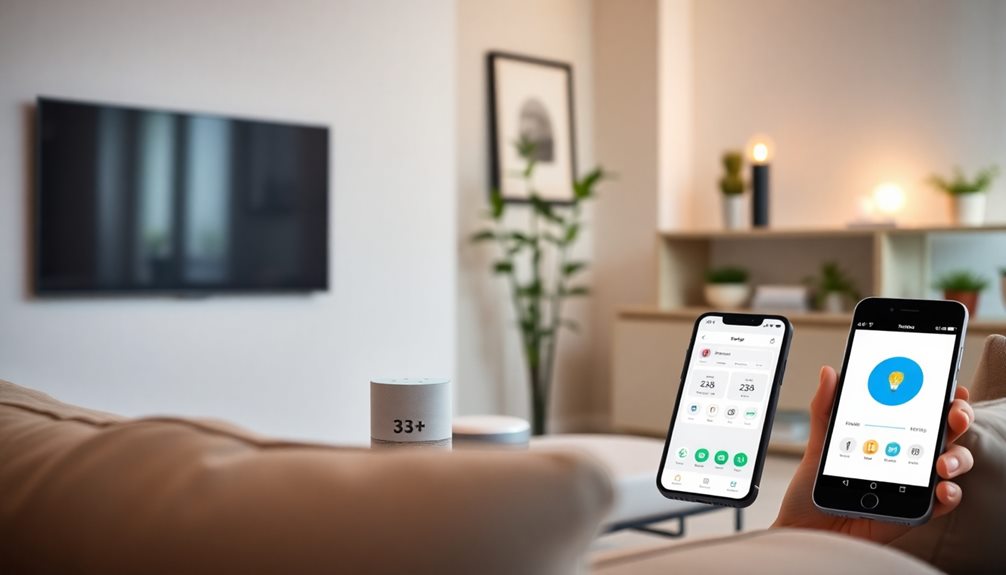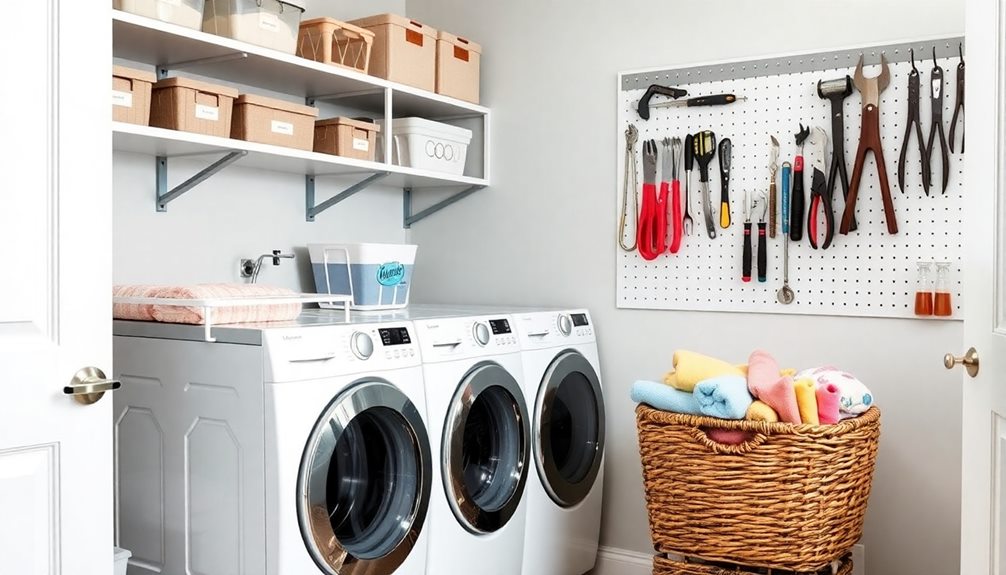Welcome to an article that will revolutionize the way you think about your space. In this guide, I will share expert tips and strategies to help you declutter your home and embrace a simplified, minimalist lifestyle. Are you ready to transform your living space into a serene and organized sanctuary?
Many of us are constantly surrounded by clutter, whether it’s old furniture, stacks of paperwork, or clothes we no longer wear. But have you ever wondered how all this clutter affects us? How does it impact our mental and physical well-being?
“The art of decluttering is less about the items you remove and more about the possibilities you create. It’s a transformative journey that starts with a single decision to let go, revealing not just a tidier home but a clearer vision of your true priorities.” — Bethia – The Visionary Designer, ByRetreat
Well, here’s a thought-provoking question for you: Does a cluttered space equal a cluttered mind? Are you truly able to relax and focus in a messy environment? Or is it time to redefine your living space and simplify your life?
Throughout this article, I’ll guide you through the process of decluttering your home and share valuable insights into the benefits of a clutter-free living space. From practical advice on getting started and setting achievable goals, to exploring effective decluttering strategies like the renowned KonMari method, we’ll cover it all.
And don’t worry, I understand that life can get busy and throw various challenges our way. That’s why we’ll also discuss how to navigate decluttering during demanding times and keep the momentum going.
So, are you ready to embark on a transformative journey and create a space that brings you peace, serenity, and overall well-being? Let’s dive in!
Key Takeaways:
- Decluttering your space can have a profound impact on your mental and physical health.
- Embracing a simplified, minimalist lifestyle can lead to greater peace and serenity.
- Practical advice and strategies will help you get started on your decluttering journey.
- The KonMari method and other effective decluttering strategies will be explored.
- Guidance will be provided on how to overcome challenges and maintain a clutter-free space.
Introduction to Decluttering
Decluttering is more than just tidying up your physical space; it is a transformative process that can bring about a sense of peace and freedom. By removing excess belongings and organizing your environment, you create a space that supports your well-being and allows you to fully enjoy the present moment. In this section, I will explore the importance of decluttering and discuss the benefits it can have on your mental and physical health.
Importance of Decluttering
Decluttering your space is not only about creating a clean and organized home; it also has a profound impact on your overall well-being. A cluttered environment can contribute to feelings of stress, overwhelm, and anxiety. It can make it difficult to focus, be productive, and maintain a sense of calm. By decluttering, you create a space that promotes relaxation, clarity, and peace of mind.
Benefits for Mental and Physical Health
Decluttering has numerous benefits for both your mental and physical health. From reducing stress to improving your overall sense of well-being, embracing a decluttered lifestyle can have a transformative effect on your life. Here are some key benefits:
- Reduced Stress: Cluttered spaces can be overwhelming and contribute to feelings of stress and anxiety. Decluttering eliminates visual distractions and creates a serene environment.
- Improved Focus and Productivity: A clutter-free space allows you to focus on the task at hand and increases your productivity. With an organized space, you can easily find what you need and avoid distractions.
- Calm and Tranquility: Decluttering creates a sense of calm and tranquility in your home. It promotes a more peaceful atmosphere, allowing you to relax and unwind.
- Enhanced Emotional Well-being: Letting go of unnecessary possessions can help you detach from the past, release emotional baggage, and make room for new experiences and opportunities.
- Improved Sleep: A clutter-free bedroom creates a peaceful and inviting space that promotes better sleep quality.
- Physical Health Benefits: Decluttering often involves physical activity, which can contribute to improved physical health. It encourages movement, reduces dust and allergens, and creates a more hygienic living environment.
By recognizing the importance of decluttering and understanding the benefits it offers, you can embark on a journey towards a simplified and harmonious living space.
Foundations of Decluttering
When it comes to decluttering, getting started can be the most challenging part. But don’t worry, I’m here to help you navigate the first steps to a clutter-free home. Let’s dive into the foundations of decluttering and discover how to begin this transformative process.
How to Start Decluttering
The first step in decluttering is to assess your space and determine what areas need the most attention. Take a walk through your home and identify the rooms or areas that are causing you the most stress or overwhelm. These may be the ideal places to begin your decluttering journey. Remember, you don’t have to tackle everything at once. Starting small and focusing on one area at a time can help you stay motivated and avoid feeling overwhelmed.
First Steps to Take
Once you’ve identified the areas of your home that need decluttering, it’s time to make a plan. Set aside dedicated time in your schedule to focus on decluttering. Start by gathering the necessary supplies such as garbage bags, boxes for donations, and storage bins for organizing. Create designated zones for sorting items into categories like keep, donate, sell, or discard. This will make the decluttering process more efficient and organized.
Setting Goals and Timelines
Setting goals and timelines can help you stay on track and maintain momentum throughout your decluttering journey. Determine specific goals for each area you plan to declutter and establish a realistic timeline for completion. Breaking down larger tasks into smaller, manageable goals will make the process feel less overwhelming and more achievable. Celebrate your progress along the way to stay motivated and encouraged.
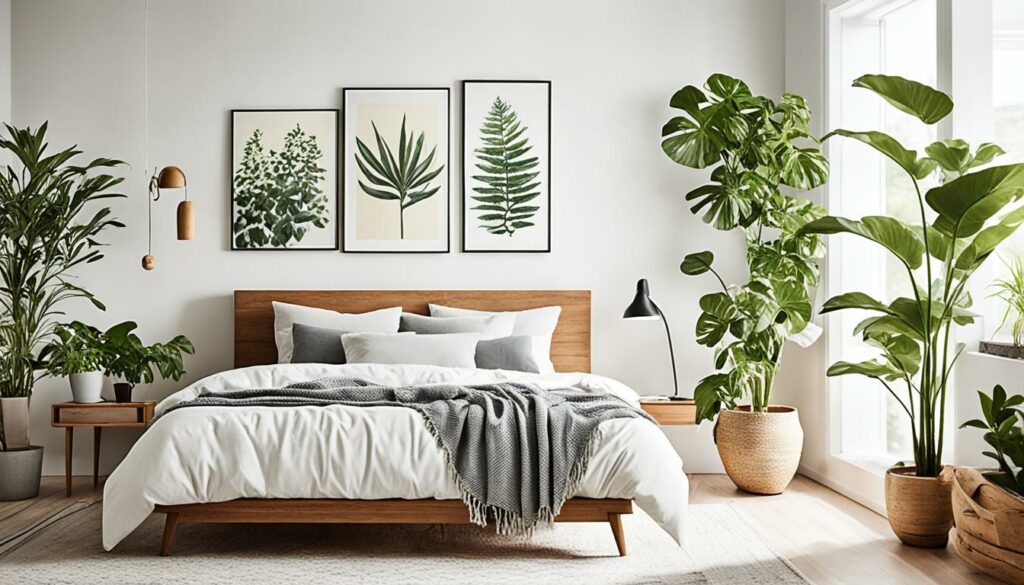
Change Your Mind, Change Your Home
Decluttering goes beyond simply tidying up your physical space. It also involves a shift in mindset. Changing your mindset is crucial to creating lasting change and maintaining a clutter-free home. Consider your values and how you want your home to reflect those values. Embrace minimalism and focus on surrounding yourself with only the items that truly bring you joy and serve a purpose in your life. By changing your mindset, you can transform your home into a sanctuary of peace and simplicity.
Psychological Benefits of Decluttering
In addition to the physical benefits, decluttering also has numerous psychological advantages. Removing excess clutter from your environment can reduce feelings of stress, anxiety, and overwhelm. It allows you to create a space that promotes relaxation and inner tranquility. Decluttering can also improve your focus and productivity, leading to a more fulfilling and efficient day-to-day life. As you declutter, pay attention to the positive impact it has on your mental and emotional well-being.
Overcoming Mental Barriers
Decluttering can sometimes be hindered by mental barriers such as attachment to sentimental items or fear of letting go. To overcome these mental barriers, focus on the benefits of decluttering and the positive impact it will have on your life. Shift your perspective and remind yourself that letting go of physical possessions doesn’t diminish the memories or experiences associated with them. Allow yourself to release the emotional attachment and embrace the freedom that comes with a clutter-free space.
The foundations of decluttering lay the groundwork for a simplified and organized life. By following these first steps and embracing the psychological benefits, you can overcome any mental barriers and embark on a decluttering journey that will transform your home and your mindset.
Strategies for Effective Decluttering
Tips for Decluttering
To effectively declutter your space, it is important to have a clear plan and implement practical techniques. Here are some tips to help you on your decluttering journey:
- Start small: Begin decluttering one area or room at a time. This allows you to focus and build momentum gradually.
- Set specific goals: Define what you want to achieve with your decluttering efforts. Break down your goals into smaller tasks for easier management.
- Sort and categorize: Create designated areas for different categories of items. This makes it easier to assess what you have and decide what to keep, donate, or discard.
- Utilize Marie Kondo’s method: Explore the popular KonMari method introduced by Marie Kondo. This approach focuses on keeping items that spark joy and letting go of those that don’t.
- Create a decluttering system: Develop a system that works for your lifestyle and helps you maintain an organized space. This could include storage solutions, labeling, and regular decluttering sessions.
- Donate or sell unused items: Instead of throwing away items, consider donating them to charitable organizations or selling them to others who may find value in them.
- Involve the entire household: Get everyone in your household involved in the decluttering process. This fosters a sense of responsibility and ensures that everyone’s belongings are considered.
- Stay motivated: Celebrate small wins along the way and remind yourself of the benefits of decluttering, such as a cleaner and more peaceful living environment.
- Seek inspiration: Look for decluttering success stories, minimalist home makeovers, and organization tips from reputable sources to keep you motivated and inspired.
By implementing these tips, you can develop effective decluttering strategies and transform your space into a clutter-free haven.
Best Practices and Common Techniques
When it comes to decluttering, there are some best practices and common techniques that can help you streamline the process and achieve optimal results:
- Start with visible clutter: Begin decluttering with areas that are easily visible and tend to accumulate clutter, such as countertops, tables, and shelves.
- Purge regularly: Make decluttering a regular habit to prevent accumulation of unnecessary items. Set aside dedicated time each month or season to reassess your belongings.
- Use storage solutions: Invest in storage solutions, such as bins, baskets, and shelves, to keep your belongings organized and easily accessible.
- Take before and after photos: Document your decluttering progress using photos. This serves as a visual reminder of how far you’ve come and helps you stay motivated.
- Declutter digitally: Extend your decluttering efforts to your digital space. Clean up your email inbox, organize files on your computer, and delete unused apps from your devices.
- Practice mindful shopping: Before making a purchase, consider if the item is truly necessary and if it aligns with your values and lifestyle. This prevents unnecessary clutter from entering your space.
Creating a Decluttering System
A well-designed decluttering system can make the process more efficient and sustainable. Here’s how you can create a system that works for you:
- Assess your space: Evaluate the specific areas in your home that require decluttering. Identify the problem areas and prioritize them based on urgency or impact on daily life.
- Define your categories: Determine the categories that make sense for your belongings. This could include clothing, books, kitchen items, sentimental items, and more.
- Establish decluttering routines: Set a decluttering schedule that aligns with your lifestyle. Whether it’s a weekly decluttering session or a dedicated decluttering day each month, find a routine that works for you.
- Create designated areas: Designate specific spaces for each category of items. This ensures that everything has its place and makes tidying up much easier.
- Label and organize: Use labels or color-coding systems to further organize your belongings. This helps you quickly find what you need and maintain order in your space.
- Regular maintenance: Continuously maintain your decluttered space by decluttering on an ongoing basis. Regularly reassess your belongings and let go of items that no longer serve a purpose.
By creating a decluttering system tailored to your needs, you can maintain an organized and clutter-free home effortlessly.
Utilizing Marie Kondo’s Method
Marie Kondo’s method, known as the KonMari method, has gained significant popularity for its effective approach to decluttering and organizing. This method revolves around the principle of keeping only items that spark joy. Here’s an overview of the KonMari method and how you can utilize it:
“The KonMari Method™ encourages
Room-by-Room Decluttering
Decluttering your home can seem like a daunting task, but taking it one room at a time can help make the process more manageable and less overwhelming. In this section, I will provide room-by-room decluttering tips and techniques to help you transform each space into a clutter-free haven.
Decluttering the Attic
Attics often become storage spaces for items that we no longer use or need. To declutter your attic, start by sorting through your belongings and determining what to keep, donate, or toss. Utilize storage bins, labels, and shelving to maximize space and keep items organized and easily accessible.
Decluttering the Basement
The basement is another area prone to clutter accumulation. Begin by decluttering larger items such as furniture or appliances that are no longer in use. Then, move on to sorting through boxes and bins, only keeping items that hold sentimental value or are genuinely useful. Install shelves, hooks, and storage systems to keep the space tidy and organized.
Decluttering the Bathroom
Start by removing any expired or unused toiletries and medications. Clear off countertops, organizing items in designated storage containers or drawers. Dispose of any old towels or linens and replace them with fresh ones. Keep only essential items within easy reach to maintain a clean and clutter-free bathroom.
Decluttering the Bedroom
Create a calming and clutter-free environment in your bedroom by decluttering items such as clothes, accessories, and personal belongings. Sort through your wardrobe, donating or discarding clothes that no longer fit or that you no longer wear. Invest in storage solutions such as closet organizers to maximize space and keep your belongings organized.
Decluttering the Children’s Rooms
Children’s rooms can quickly become overwhelmed with toys, clothes, and clutter. Involve your children in the decluttering process, teaching them the importance of organization and thoughtful consumption. Sort through toys, donating or discarding those that are broken or no longer used. Utilize storage bins, shelves, and labeled containers to keep their belongings organized and easily accessible.

Decluttering the Closet
To declutter your closet, start by removing everything and sorting items into categories such as tops, bottoms, and accessories. Donate or sell clothes that no longer fit or that you no longer wear. Optimize closet space by using matching hangers, storage containers, and shoe racks. Maintain a minimalist wardrobe of versatile, high-quality pieces.
Decluttering the Dining Room
Create a welcoming and clutter-free dining room by removing any unnecessary items and keeping the space organized. Clear off tables and surfaces, focusing on displaying only decorative or functional items. Utilize storage solutions such as sideboards or cabinets for storing extra dinnerware or serving utensils.
Decluttering the Garage
The garage can often become a catch-all space for miscellaneous items. Start by decluttering larger items such as tools or sporting equipment that you no longer need or use. Sort through boxes and bins, donating or discarding items that have been sitting untouched for years. Install shelving units and hanging racks to maximize vertical storage space.
Decluttering the Home Movie Theatre
If you have a dedicated home movie theatre or entertainment room, decluttering can help create a more enjoyable viewing experience. Remove any outdated electronics or cables that are no longer in use. Organize DVDs, CDs, or video games in storage containers or shelves. Keep seating areas clean and free of clutter for a comfortable movie-watching experience.
Decluttering the Home Office
Maintaining a clutter-free home office is vital for productivity and focus. Start by decluttering paperwork, organizing it into labeled folders or digitally scanning important documents. Remove any items that do not contribute to your work or that cause distractions. Invest in storage solutions such as file cabinets or desk organizers to keep your space tidy and efficient.
Decluttering the Kitchen
The kitchen is often the heart of the home, but it can also be a magnet for clutter. Declutter by removing any expired food or kitchen items that are no longer in use. Organize cabinets and drawers, utilizing dividers and storage containers for smaller items. Keep countertops clear and find designated homes for appliances.
Decluttering the Laundry Room
Keep your laundry room clean and organized by decluttering unnecessary items. Toss or donate cleaning products that are expired or that you no longer use. Install shelves or cabinets for storing laundry supplies and keep the space tidy by folding and organizing clean laundry promptly.
Decluttering the Living Room
Create a cozy and clutter-free living room by decluttering items such as books, magazines, and decorative pieces. Utilize storage solutions such as bookshelves and storage ottomans to keep the space organized. Keep surfaces clear of unnecessary items, allowing for a relaxing and inviting environment.
Decluttering Outdoor Spaces
To maintain a clutter-free outdoor space, start by removing any broken or damaged outdoor furniture or decorations. Sort through gardening tools or equipment, donating or discarding items that are no longer functional. Utilize storage solutions such as outdoor sheds or designated storage containers to keep outdoor items organized and protected.
Decluttering During Life’s Challenges
Life’s challenges can often make decluttering seem like an overwhelming task. When faced with busy times, stressful periods, or significant life events, finding the motivation and time to declutter can feel impossible. However, decluttering during these challenging moments is not only possible but also beneficial for your well-being.
During busy times, it’s essential to simplify the decluttering process by breaking it down into smaller, manageable tasks. Set aside short periods of time each day or week to focus on specific areas or categories of your home. By tackling small decluttering tasks consistently, you can make steady progress even when life gets hectic.
Stressful periods can also be an opportunity for decluttering and finding calm amidst chaos. Decluttering can serve as a therapeutic outlet, allowing you to release tension and regain a sense of control over your environment. Start in areas that provide comfort and relaxation, such as your bedroom or living room, and gradually expand to other spaces.
Significant life events, such as moving, getting married, or having a baby, often entail a reassessment of your belongings and a desire for a fresh start. Take advantage of these moments of change to declutter and create a space that aligns with your new chapter. Consider the practicality and relevance of each item and let go of anything that no longer serves a purpose or brings joy.
Remember that decluttering is not a one-time project but an ongoing process. Be patient with yourself and flexible in adapting your decluttering routine to fit your current circumstances. The goal is progress, not perfection.

By implementing these strategies, you can navigate the decluttering process during life’s challenges and create a space that fosters peace and tranquility. Remember, decluttering is a journey, and it’s the small steps that lead to significant transformations.
Handling decluttering during busy or stressful times
When life gets overwhelming and schedules become packed, decluttering can often take a backseat. However, it’s important to find ways to manage decluttering even during these busy or stressful times. By incorporating a few practical strategies into your routine, you can make progress in decluttering while maintaining a sense of calm and focus.

“Decluttering is not just about getting rid of physical possessions, but also about creating a space that promotes mental clarity and well-being.” – Marie Kondo
Firstly, it’s essential to prioritize tasks and set realistic goals. Assess your decluttering project and break it down into smaller, manageable tasks. Create a list and prioritize what needs immediate attention and what can wait for a less busy time. By focusing on one task at a time, you can make progress without feeling overwhelmed.
Managing time effectively is also crucial in handling decluttering during busy or stressful times. Block out specific time slots in your schedule dedicated solely to decluttering activities. Whether it’s 15 minutes each day or a few hours on the weekend, having dedicated time for decluttering ensures that progress is made consistently.
Additionally, maintaining a sense of calm and focus is key. Find ways to create a peaceful environment while decluttering. Play relaxing music, light scented candles, or incorporate mindfulness practices to stay centered. When you approach decluttering with a calm mindset, you’re more likely to make thoughtful decisions about what to keep and what to let go of.
Remember to be kind to yourself during the process. Decluttering can be emotionally challenging, especially during stressful times. Acknowledge the effort you’re putting in and celebrate small victories along the way. Give yourself permission to take breaks when needed and ask for support from family members or friends who can lend a helping hand.
By implementing these strategies, you can handle decluttering effectively even when life gets busy or stressful. Remember, the goal is progress, not perfection. Embrace the process and enjoy the journey towards a clutter-free and organized space.
Advanced Decluttering Techniques
In order to truly transform your living space into a clutter-free haven, it’s important to employ advanced decluttering techniques. These methods will take your decluttering efforts to the next level, providing you with detailed strategies tailored to each room in your home.
Working it out room by room is a key approach to tackle clutter effectively. By focusing on one room at a time, you can stay organized and prevent yourself from feeling overwhelmed. This method allows you to give each space the attention it deserves, resulting in a thorough decluttering process.
Here are some detailed strategies that you can implement for each room:
Bedroom:
- Start by decluttering your wardrobe and getting rid of clothes that you no longer wear or that don’t fit you anymore.
- Organize your accessories, such as belts, scarves, and jewelry, using storage solutions like drawer organizers or hanging organizers.
- Clear off surfaces like nightstands and dressers, keeping only essential items within reach.
- Review your bookshelf and remove any books that you won’t read again or that no longer align with your interests.
Kitchen:
- Declutter your countertops by storing appliances that aren’t frequently used.
- Sort through your pantry and discard expired or unused items.
- Organize your kitchen utensils and cooking tools, keeping only those that you regularly use.
- Streamline your dishware and glassware collection, getting rid of any chipped or mismatched pieces.
Living Room:
- Remove any unnecessary decorative items and keep only those that hold sentimental value or bring you joy.
- Organize your entertainment center by properly arranging DVDs, books, and electronic devices.
- Declutter your coffee table and side tables, storing items like remote controls and magazines in designated spaces.
- Consider implementing storage solutions, such as ottomans with hidden compartments, to keep clutter at bay.
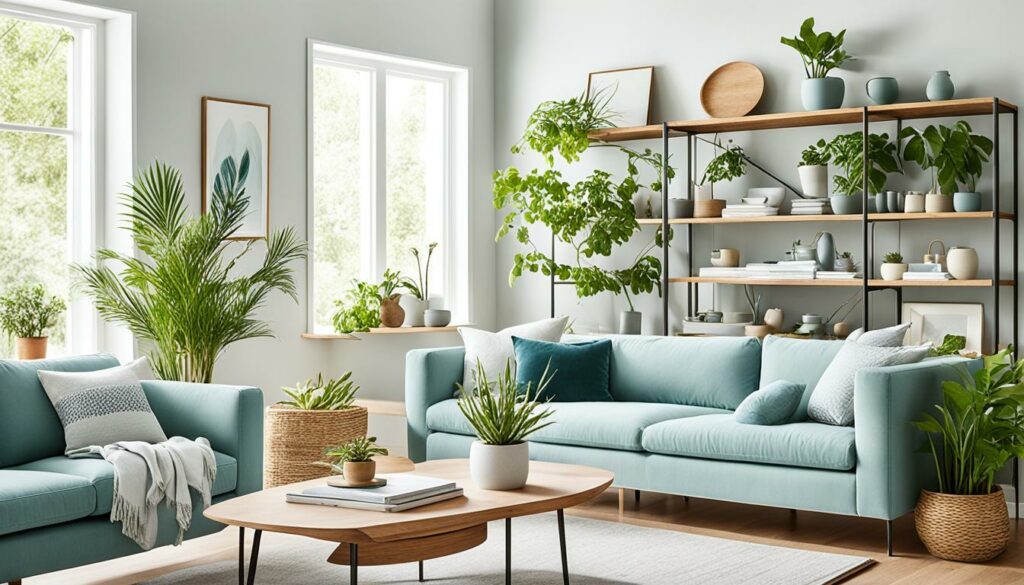
Remember to apply these strategies to each room in your home, tailoring them to suit your specific needs and preferences. By following these advanced decluttering techniques, you will create a more organized and harmonious living space that promotes a sense of calm and tranquility.
Declutter One Category at a Time
Decluttering can feel like an overwhelming task when faced with a large number of items. However, by approaching it one category at a time, you can make the process more manageable and efficient. Instead of trying to tackle your entire space at once, focus on decluttering specific categories, such as clothing, books, or sentimental items.
By decluttering one category at a time, you can stay focused, prioritize your efforts, and make clearer decisions about what to keep and what to let go. This approach allows you to break down the decluttering process into smaller, achievable tasks. Whether you have a lot of clutter or are just starting, this method can help you make progress and see tangible results.
To effectively declutter one category at a time, consider the following strategies:
- Categorize your belongings: Start by grouping similar items together within each category. This will help you see the quantity and identify duplicates, enabling you to make more informed decisions.
- Set specific goals: Determine how much you want to reduce each category and set realistic goals accordingly. This will give you a sense of direction and keep you motivated throughout the decluttering process.
- Sort and evaluate: Go through each item within the category and decide whether to keep, donate, sell, or discard it. Consider its usefulness, sentimental value, and whether it aligns with your current lifestyle.
- Create designated spaces: Designate specific areas or storage solutions for the items you choose to keep. This will help maintain organization and prevent clutter from accumulating again.
- Follow the one-in, one-out rule: Once you’ve decluttered a category, establish a rule where you only bring in new items if you remove an equal number of items from that category. This helps prevent future clutter and encourages mindful consumption.
Remember, decluttering is a process that takes time and effort. Be patient with yourself and celebrate small victories along the way. By decluttering one category at a time, you’ll gradually transform your space into a more organized and harmonious environment.
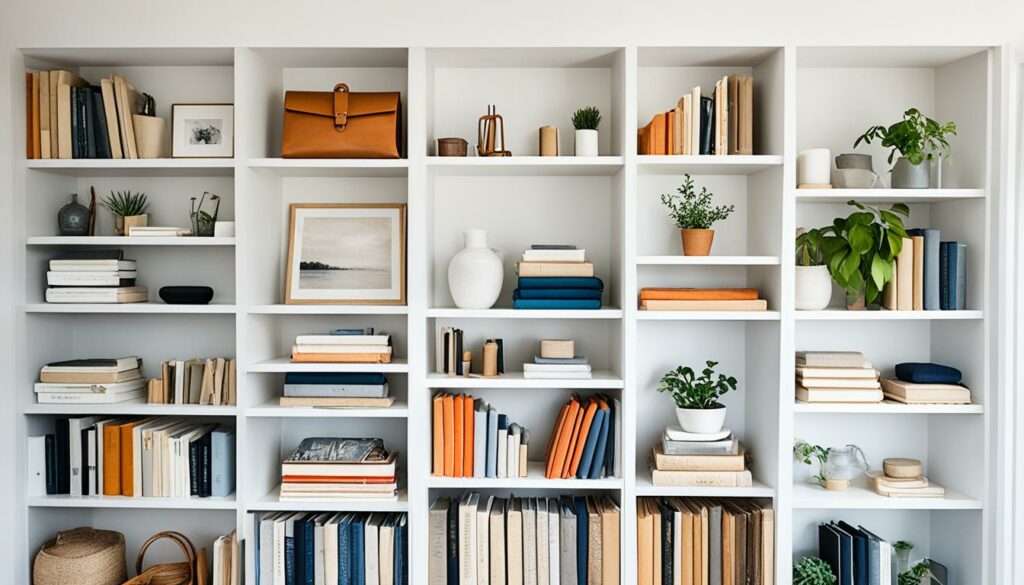
Professional Help and Community
Sometimes, decluttering can feel like an overwhelming task. That’s where professional help and engaging with a community can make a significant difference. Seeking professional organizer assistance can provide you with valuable support and guidance throughout the decluttering process. Whether you’re struggling to get started, feeling overwhelmed by the amount of stuff you have, or need assistance with organizing and creating efficient systems, a professional organizer can offer professional help and personalized solutions tailored to your needs and goals.
But when should you seek professional help? It’s essential to recognize when you can benefit from professional organizer assistance. Here are a few indicators that it may be time to call in the professionals:
- You’ve attempted to declutter multiple times without making lasting progress.
- You feel overwhelmed and don’t know where to start or how to prioritize your decluttering tasks.
- You have a specific room or area in your home that requires specialized expertise, such as a home office or garage.
- You’re facing significant life events or transitions, such as moving, downsizing, or combining households.
- You require assistance in creating efficient storage systems, organizing paperwork, or optimizing your space.
When you decide to seek professional help, it’s essential to find a professional organizer who understands your needs and shares your vision for a clutter-free space. Research different organizers, read reviews and testimonials, and schedule initial consultations to ensure you find the right fit for your decluttering journey.
While professional help can be immensely beneficial, don’t underestimate the value of a supportive decluttering community. Helping others declutter can be a rewarding experience for both parties involved. By assisting friends, family, or even joining a community organization or online group focused on decluttering, you can provide practical support, encouragement, and motivation to others on their decluttering journey.
There are several techniques and benefits to consider when assisting others in decluttering:
- Sharing decluttering strategies and advice from personal experiences.
- Providing an objective perspective and helping others let go of items they no longer need or use.
- Offering physical assistance with sorting, organizing, and donating items.
- Acting as an accountability partner and helping to maintain motivation and momentum.
- Creating a sense of camaraderie and support within the decluttering community.
By helping others declutter, you not only contribute to their journey but also strengthen your own decluttering skills and reinforce the benefits of a simplified, clutter-free lifestyle.

Maintaining a Decluttered Home
Once you have successfully decluttered your space, it is essential to maintain a clutter-free environment. Keeping your home organized and free of unnecessary items not only promotes a sense of peace and tranquility but also prevents clutter from accumulating again. In this section, I will provide you with practical tips and strategies for maintaining a decluttered home over the long term.
- Create Daily Decluttering Habits: Implementing small, consistent habits can make a big difference in preventing clutter from piling up. Set aside a few minutes each day to tidy up and put items back in their designated places. This could include folding and putting away laundry, clearing countertops, or organizing paperwork. By staying proactive on a daily basis, you can prevent clutter from taking over your space.
- Establish Organizational Systems: Having effective organizational systems in place can help you maintain a clutter-free environment. Find storage solutions that work for you, such as bins, shelves, or baskets, to keep items organized and easily accessible. Labeling containers or using color-coded systems can streamline the process of finding and putting away items.
- Regularly Assess and Purge: Set aside time every few months to assess your belongings and identify items that are no longer serving a purpose or bringing you joy. By regularly purging unnecessary items, you can prevent clutter from accumulating again and create more space in your home.
- Practice Mindful Consumption: Be mindful of what you bring into your home. Before making a purchase, consider whether the item is necessary, functional, or truly brings you joy. Avoid impulse buying and focus on acquiring items that align with your values and enhance your life.
- Enlist the Support of Your Household: Maintaining a decluttered home is a group effort. Encourage your family members or roommates to adopt clutter-free habits and participate in regular decluttering sessions. By working together, you can create an environment where everyone takes responsibility for maintaining a clutter-free space.
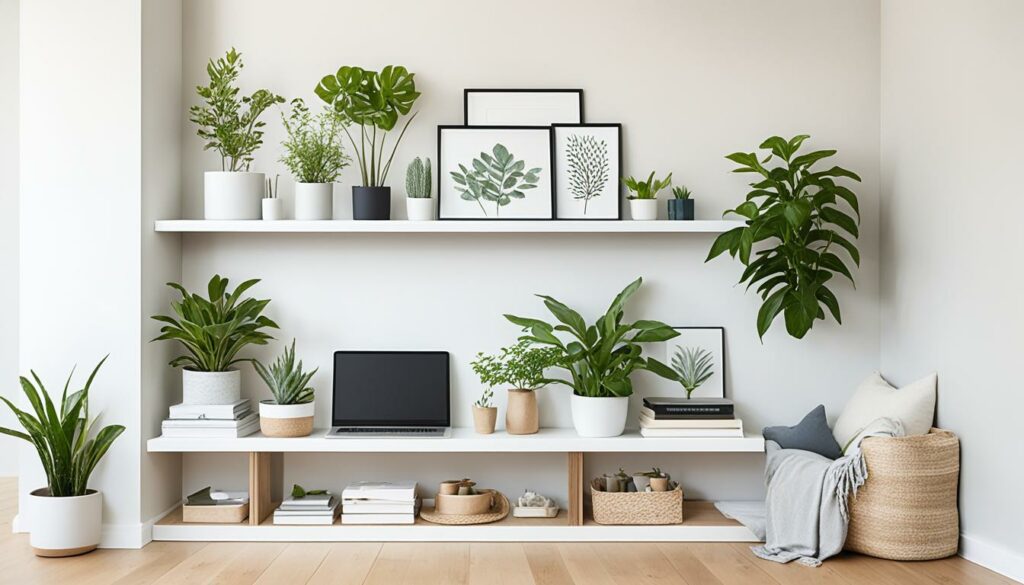
“A clutter-free space is not a one-time achievement but an ongoing commitment to mindful living and intentional choices.” – Me
Your Unique Home
When it comes to decluttering, it’s important to remember that every home is unique. There is no one-size-fits-all approach that works for everyone. That’s why it’s crucial to personalize your decluttering journey and adapt strategies that suit your individual needs and preferences.
Start by considering your values, lifestyle, and personal style. Think about what truly matters to you and how you want your home to reflect that. Whether you embrace a minimalist aesthetic or prefer a more eclectic look, the goal is to create a space that feels authentic and aligns with who you are.
As you navigate the decluttering process, don’t be afraid to experiment and find what works best for you. Some people enjoy following specific methods, like the KonMari method, while others prefer a more intuitive approach. Explore different techniques and strategies, and adapt them to fit your unique circumstances. Remember, the key is to find a system that you can maintain in the long run.
By personalizing your decluttering approach and adapting strategies to suit your unique home, you can create an environment that fosters tranquility and joy. Embrace your individuality and let it shine through in your organized and clutter-free space.

